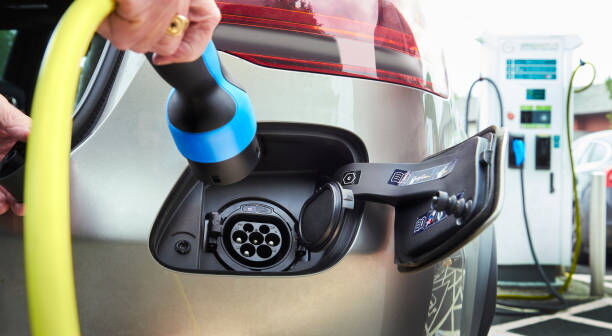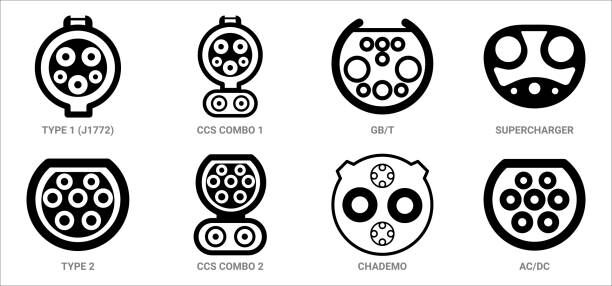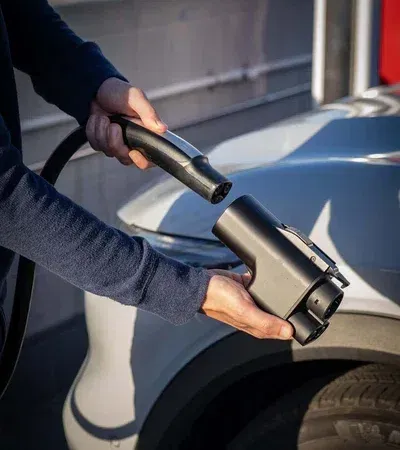As electric vehicles (EVs) continue to gain popularity, understanding how to use EV charging stations effectively has become essential for both new and experienced EV owners. Charging an EV is different from refueling a traditional gasoline-powered car, and the process can vary depending on the type of charging station, the vehicle’s compatibility, and the charging network. This guide will walk you through everything you need to know about EV charging stations, including the different types, connectors, costs, and tips for planning your charging sessions.

EV charging stations are categorized into three main types based on their power output and charging speed. Each type serves different needs, from overnight home charging to rapid top-ups during long trips.
Level 1 charging is the most basic and accessible form of EV charging. It uses a standard household outlet (120V) and is typically included with the purchase of an electric vehicle. While Level 1 charging is convenient, it is also the slowest method, adding approximately 3 to 5 miles of range per hour. This makes it ideal for overnight charging at home or for emergency top-ups when no other options are available. However, it is not practical for daily use if you have a long commute or frequently need to recharge quickly.
Level 2 charging is the most common type of charging for both home and public use. It requires a 240V outlet, similar to what is used for large appliances like dryers or ovens. Level 2 chargers can add 20 to 25 miles of range per hour, making them significantly faster than Level 1 chargers. Many EV owners install Level 2 charging stations at home for daily use, while public Level 2 chargers are often found at workplaces, shopping centers, and parking garages. This type of charging strikes a balance between speed and accessibility, making it a popular choice for most EV drivers.
DC Fast Charging, also known as Level 3 charging, is the fastest way to charge an electric vehicle. These stations deliver high-speed direct current (DC) power directly to the EV’s battery, bypassing the onboard converter. DC fast chargers can charge an EV’s battery to 80% in just 20 to 60 minutes, depending on the vehicle and the charger’s power output. Some ultra-fast chargers can deliver up to 350 kW, enabling certain EVs to gain hundreds of miles of range in as little as 15 minutes. DC fast chargers are essential for long road trips and quick public charging needs, but they are less common and more expensive to use than Level 1 and Level 2 chargers.
Not all EVs use the same type of charging connector, so it’s important to know which one is compatible with your vehicle. Here are the most common types of connectors:

The SAE J1772 connector is the standard for Level 1 and Level 2 charging in North America. It is used by most electric vehicles, except for Tesla models, which require an adapter to connect to J1772 chargers. This connector is widely available at public charging stations and is the most common type for home charging setups.
The CCS connector is used for DC fast charging and is becoming the most widely adopted standard in North America and Europe. It combines the J1772 connector with two additional DC pins, allowing for high-speed charging. Most modern EVs, except for Tesla and some older models, use CCS connectors for fast charging.
The CHAdeMO connector is an older standard primarily used by Japanese automakers like Nissan and Mitsubishi. While it was once a popular choice for DC fast charging, it is becoming less common as more manufacturers adopt the CCS standard. Some charging stations still offer CHAdeMO connectors, but their availability is declining.
Tesla vehicles use the North American Charging Standard (NACS), which was previously exclusive to Tesla’s Supercharger network. However, Tesla has begun opening its network to non-Tesla vehicles in some regions, and other manufacturers are starting to adopt the NACS connector. Tesla Superchargers are known for their reliability and fast charging speeds, making them a preferred option for Tesla owners.
Before you plug in your EV, there are several factors to consider to ensure a smooth and efficient charging experience.
Not all charging stations are compatible with every EV. Before heading to a public charger, check whether it supports your vehicle’s charging port and connector type. For example, Tesla owners may need an adapter to use non-Tesla chargers, while non-Tesla drivers may need to verify if a Tesla Supercharger is open to their vehicle.
Different charging stations offer varying speeds, so it’s important to choose one that meets your needs. If you’re in a hurry, a DC fast charger is your best option, but keep in mind that not all EVs can handle the highest charging speeds. Level 2 chargers are ideal for longer stops, such as at work or while shopping, while Level 1 chargers are best for overnight use.
The cost of charging your EV can vary depending on the charging network and location. Public charging networks like Electrify America, ChargePoint, and Tesla Supercharger Network may charge by the kilowatt-hour (kWh), by the minute, or by the session. Some networks also offer membership plans that provide discounted rates. Home charging is generally the most cost-effective option, especially if you have access to off-peak electricity rates.
Planning ahead is crucial when relying on public charging stations, especially during long trips. Use mobile apps like PlugShare, ChargePoint, and A Better Routeplanner to locate charging stations along your route, check their availability, and read reviews from other EV drivers. These apps can also provide real-time information on charging speeds, costs, and connector types.
If you own a Tesla or a vehicle with a less common connector, make sure to carry the necessary adapters to use a wider range of charging stations.

Most EVs and charging networks offer mobile apps that allow you to monitor your charging session remotely. This can help you avoid overstaying at a charging station and incurring additional fees.
Public charging stations are shared resources, so it’s important to be considerate of other EV drivers. Once your vehicle is fully charged, move it promptly to free up the charger for others.
Some charging networks offer discounts or free charging for members or through partnerships with automakers. Take advantage of these programs to save on charging costs.
Extreme temperatures can affect charging speeds and battery performance. In cold weather, precondition your battery before charging to optimize the process.
The EV charging infrastructure is rapidly evolving to meet the growing demand for electric vehicles. Innovations like wireless charging, vehicle-to-grid (V2G) technology, and ultra-fast chargers are on the horizon, promising to make EV charging even more convenient and efficient. Governments and private companies are also investing heavily in expanding the charging network, particularly in rural and underserved areas.
As more automakers commit to an all-electric future, the standardization of charging connectors and protocols will likely improve, making it easier for EV drivers to find compatible charging stations. Additionally, advancements in battery technology will reduce charging times and increase the range of electric vehicles, further enhancing the EV ownership experience.
Using EV charging stations doesn’t have to be complicated. By understanding the different types of chargers, connectors, and costs, you can make informed decisions that suit your driving habits and lifestyle. Whether you’re charging at home, at work, or on the go, planning ahead and using the right tools will ensure a seamless experience. As the EV landscape continues to evolve, staying informed about new technologies and infrastructure developments will help you get the most out of your electric vehicle.
